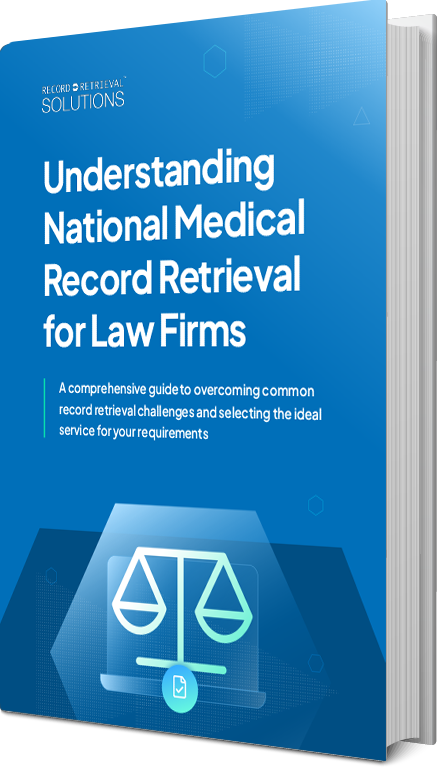Bates Numbers, also known as Bates Stamping, refer to a unique and sequential numbering system that is applied to pages of documents to uniquely identify and label them. This method was originally developed by Edwin G. Bates in the late 19th century and has since become a standard practice in legal document management. Each page of a document is stamped with a consecutive number, often along with a prefix or suffix, which allows for precise identification and easy reference. This system is particularly useful in the context of large document collections typical in legal cases, where quick access to specific pages is necessary.
The importance of effective document management cannot be overstated, especially in medical and legal settings where documentation plays a crucial role. In the medical field, proper document management ensures that patient records are organized, secure, and easily retrievable, which is vital for providing quality care and maintaining continuity across different healthcare providers. Similarly, in legal settings, systematic document management is critical for maintaining the integrity of case files, supporting evidence-based practices, and ensuring compliance with various legal standards. In both domains, Bates Numbers serve as an essential tool for indexing and retrieving documents efficiently, thereby enhancing the overall management and accessibility of critical information.
The Basics of Bates Numbers
Bates Numbers are a systematic numbering method used to label and identify individual pages of documents in a unique and sequential manner. Each page receives a Bates Stamp, which typically includes a combination of numbers and, optionally, prefixes or suffixes to aid in categorization and sorting. The primary purpose of Bates Stamping is to provide an easy and foolproof method of referencing specific pages in a document during discussions, reviews, or legal proceedings. This system ensures that each page can be uniquely identified, preventing the confusion and misfiling that can occur in large sets of documents. The process can be done manually with a hand stamp or electronically using software that applies digital Bates Numbers to documents.
The origin of Bates Numbers dates back to the late 19th century and is attributed to Edwin G. Bates, who invented the Bates Numbering Machine. This early device allowed lawyers to automatically stamp documents with consecutive numbers, thus revolutionizing document management in legal settings. Initially adopted by legal professionals to manage the vast amounts of paperwork involved in cases, Bates Stamping quickly became essential in organizing evidence and legal documents efficiently. The ability to reference a specific document quickly and accurately was invaluable in court settings, where proving a point often depends on quick access to physical evidence.
Over time, the use of Bates Numbers expanded beyond the legal realm and into other areas where document integrity and retrieval are crucial, including healthcare, finance, and government records management. In these settings, Bates Stamping helps manage documents in a way that they are easily traceable in a vast sea of information. This historical method of organizing paperwork has adapted well to the digital age, with electronic Bates Stamping now commonly used to process large volumes of digital documents quickly. As document volumes continue to grow and the need for efficient retrieval systems becomes ever more critical, Bates Numbers remain a cornerstone of effective document management strategies.
Application of Bates Numbers in Medical Records

In situations such as medical audits or legal investigations, Bates Numbers can significantly enhance the efficiency of document retrieval. For instance, during an audit, when compliance officers need to verify the accuracy and completeness of patient records, Bates-stamped documents allow for quick cross-referencing and location of relevant pages. Similarly, in legal scenarios where patient records may be used as evidence, having Bates Numbers ensures that specific documents can be easily cited and referenced in court, thereby streamlining the legal process and supporting the integrity of the presented evidence.
Moreover, in large medical facilities or hospitals where patient records are voluminous, Bates Numbers help manage the transition of records between departments. For example, when a patient is referred from general care to a specialty care department, the specific details of their previous treatments, which are crucial for the continuation of care, can be quickly retrieved using Bates Numbering. This is particularly important in fast-paced medical settings where timely access to patient information can directly impact treatment outcomes.
The utility of Bates Numbers extends to the digitization of medical records as well. In electronic health record (EHR) systems, Bates Numbering can be used to tag digital documents and images, such as scanned test results or digital forms, ensuring that these items are part of the patient’s comprehensive file. This practice supports healthcare providers in maintaining a coherent and easy-to-navigate digital record system, where every piece of data is accounted for and readily accessible. Thus, Bates Numbers provide a critical tool in both traditional and modern medical record management systems, ensuring that patient care is both efficient and meticulous.
Benefits of Using Bates Numbers
Bates Numbers offer substantial benefits in the management of medical records, primarily through improved retrieval efficiency and enhanced organization. By implementing a sequential numbering system, healthcare providers can quickly locate specific documents within extensive medical files. This organization is crucial in settings where time-sensitive decisions need to be made based on patient history and prior treatments. For example, in emergency situations or during surgical procedures, the ability to swiftly access a patient’s previous medical evaluations or operative reports can significantly influence the outcomes. The systematic approach of Bates Numbers also helps in reducing the chances of misfiling or losing important documents, ensuring that every piece of patient information is accurately catalogued and retrievable at any point.
The use of Bates Numbers also supports compliance with legal and regulatory requirements in the healthcare industry. Medical records often need to be presented as evidence in legal disputes or during regulatory audits, and having a clear, traceable numbering system simplifies the process of document verification and reduces the risk of presenting incomplete or non-compliant records. Bates Numbering provides an audit trail that can be crucial for demonstrating adherence to practices such as the Health Insurance Portability and Accountability Act (HIPAA) in the U.S., which mandates stringent handling and confidentiality of patient information. This not only helps in legal defenses but also builds trust with patients, who can be assured that their information is handled with the utmost care and professionalism.
Furthermore, Bates Numbers enhance the overall quality of healthcare documentation by promoting better data management practices. In an environment increasingly moving towards digital records, Bates Numbering can be integrated into electronic health records (EHR) systems to maintain continuity with traditional paper-based files. This integration ensures that all forms of patient data, whether paper or digital, are organized under a unified system. The numbering scheme aids in the seamless conversion and migration of records between different platforms or storage systems, supporting healthcare providers in maintaining comprehensive, organized, and easily navigable medical archives. Therefore, the adoption of Bates Numbers not only streamlines administrative processes but also reinforces the operational efficiency of healthcare facilities, allowing providers to focus more on patient care and less on document management challenges.
Challenges and Considerations
Implementing Bates Stamping in medical record management can pose several challenges that healthcare organizations need to consider. One significant issue is the initial setup and integration process, which can be complex and resource-intensive. For institutions transitioning from a predominantly paper-based system to one that includes Bates Numbers, there is a need for substantial initial input to design and implement a system that accurately tracks and assigns numbers to all existing and new documents. This process can be time-consuming and may require temporary slowdowns in regular operations, which can affect service delivery. Additionally, staff must be adequately trained to understand and manage the new system, which involves not only learning how to use the software but also understanding the importance of consistent document handling practices.
Another challenge involves the integration of Bates Numbers into existing electronic health records (EHR) systems. While modern EHR systems are robust and capable of handling complex data management tasks, configuring these systems to include an additional layer of Bates Numbering requires careful planning and execution. This integration must be seamless to ensure that the Bates Numbers are reliably assigned and tracked across different modules of the EHR system, such as patient records, billing, and compliance reporting. Ensuring compatibility between the Bates Numbering system and various EHR platforms can also be a technical hurdle, especially if the systems use different standards or formats for data storage and retrieval.
Moreover, there are considerations regarding the scalability and flexibility of Bates Stamping within medical record systems. As healthcare facilities grow and the volume of records increases, the Bates Numbering system must be capable of scaling accordingly without loss of functionality or efficiency. This scalability is crucial to maintain consistent document management practices across potentially expanding departments or new facilities within a healthcare network. Additionally, while implementing such a system, healthcare organizations must consider data privacy regulations and ensure that the Bates Stamping process does not inadvertently expose sensitive information. This requires a balance between accessibility and security to protect patient data while still allowing for the efficient retrieval and management of records as required by healthcare professionals.
Technological Integration

Integrating Bates Numbers with modern EHR systems offers substantial benefits for enhanced document management. First, it supports the centralization of patient records, allowing all forms of documentation, whether scanned paper files or digital forms, to be uniformly indexed and accessed within a single system. This uniformity ensures that healthcare providers can quickly find and reference documents during clinical assessments or in response to legal inquiries. Moreover, with Bates Numbers embedded within EHRs, healthcare facilities can improve their compliance with legal and regulatory standards by maintaining a clear audit trail of document access and modification. This level of traceability is crucial not only for internal audits but also for meeting the stringent requirements of data protection regulations.
Additionally, the integration of Bates Numbers in EHR systems enhances operational efficiency by reducing the administrative burden on healthcare staff. With automated systems handling the document numbering, healthcare professionals can focus more on patient care rather than administrative tasks. This integration also reduces the likelihood of human errors, such as misfiling or duplicating records, by ensuring that each document’s unique identifier is consistently applied and tracked. In turn, this can lead to improved patient outcomes by ensuring that healthcare providers have timely and easy access to accurate and complete medical histories. Overall, the technological integration of Bates Numbers into healthcare systems represents a significant advancement in the management and security of medical documentation, aligning with broader trends towards digitalization and efficiency in healthcare management.
Future Trends
As document management technology continues to advance, the use of Bates Numbers is likely to evolve in ways that enhance both their functionality and applicability across various sectors of healthcare management. With the increasing shift towards digital transformation, Bates Numbering could integrate more deeply with technologies such as artificial intelligence (AI) and machine learning (ML). These technologies could automate the indexing process further, predicting and adapting to the needs of users by automatically categorizing and numbering documents based on their content and usage patterns. This could lead to even more streamlined workflows where documents are not only easier to retrieve but also smarter in how they present information relevant to specific healthcare scenarios.
In addition to technological integration, the future might see Bates Numbers becoming a standard feature across more extensive healthcare management platforms, beyond just document management. For example, they could be used in managing clinical trial data, where vast amounts of information must be meticulously organized and easily accessible for analysis, reporting, and regulatory compliance. Bates Numbering could ensure that each piece of data, from patient consent forms to clinical study reports, is traceable and secure, enhancing the integrity and reliability of clinical trials.
The potential for Bates Numbers in healthcare could also expand into areas like pharmaceutical management and medical supply chains. By assigning Bates Numbers to batches of medications or medical supplies, healthcare providers could improve tracking and recall processes, ensuring that items are easily traceable throughout their lifecycle. This could be particularly valuable in situations requiring swift action, such as a product recall or tracing the distribution path of a medication to investigate unexpected side effects or efficacy issues.
Finally, as regulatory demands for data privacy and security continue to grow, Bates Numbers could play an integral role in compliance strategies. Their use might become more prevalent as part of efforts to secure patient data against breaches, providing a reliable method for auditing and monitoring access to sensitive information. As the healthcare industry faces increasing threats from cyberattacks, robust document management systems featuring advanced Bates Numbering could become a critical defense mechanism, ensuring that every access to a document is logged and traceable. Thus, Bates Numbers might not only serve administrative and compliance roles but also become pivotal in cybersecurity measures within healthcare settings.
Bates Numbers have been highlighted as a pivotal tool in medical record management, offering a systematic and traceable method for organizing and referencing documents efficiently. These unique, sequential identifiers facilitate the quick retrieval of information, which is crucial in healthcare settings where timely access to patient data can significantly impact medical outcomes. The use of Bates Numbers ensures that each document within a patient’s file is easy to locate and reference, reducing the risk of errors and enhancing the accuracy of data handling. This is particularly beneficial in large healthcare facilities where the volume of documents can be overwhelming and where multiple providers may need access to the same records.
The ongoing relevance of Bates Numbers in healthcare documentation practices cannot be overstated. As medical records management continues to evolve with technological advancements, the integration of Bates Numbers into electronic health record (EHR) systems and other digital platforms offers a way to maintain consistency and reliability in document indexing and retrieval. This practice not only supports the operational efficiency of healthcare providers but also helps in maintaining compliance with legal and regulatory standards, providing an audit trail that is indispensable for legal and regulatory compliance.

For those looking to implement or improve Bates Numbering systems in medical settings, several resources and services are available. Providers can consult with IT professionals specializing in healthcare solutions, explore technology vendors offering compliant document management software, or participate in webinars and training sessions focused on best practices in healthcare documentation. By taking proactive steps to update and optimize document management strategies, healthcare providers can ensure they are well-equipped to meet the demands of modern medicine.







